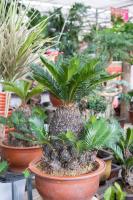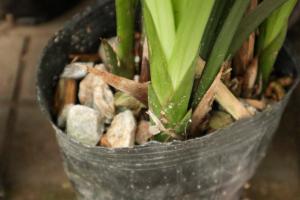What to Put on Bottom of Plant Pot
When it comes to planting in pots, there is one element that is often overlooked, but is crucial for the success of your plant - the bottom layer. The bottom layer of your pot will not only act as a drainage system for excess water, but it will also provide a barrier between the soil and the pot, preventing soil from escaping through the drainage holes. So, what should you put on the bottom of your plant pot? Here are some options:
Gravel or Rocks
One common option for the bottom layer of a plant pot is gravel or rocks. The idea behind this is that the gravel will create a barrier between the soil and the drainage holes, allowing excess water to flow through freely. Additionally, the rocks or gravel will add weight to the bottom of the pot, making it more stable and less likely to tip over. However, it's important to note that rocks or gravel could potentially hold onto water and create a soggy environment at the bottom of your pot, so be sure to use a layer of mesh or landscape fabric to prevent soil from sinking into the rocks.
Pea Gravel or Sand
Pea gravel or sand is another option for the bottom of your plant pot. Like rocks or gravel, pea gravel or sand will create a barrier between the soil and the drainage holes. The benefit of using pea gravel or sand is that it is less likely to hold onto water, so you won't have to worry as much about creating a soggy environment. However, it's important to note that pea gravel or sand can still contribute to compaction at the bottom of your pot over time, which can restrict drainage and harm your plant. For this reason, it's a good idea to periodically remove the gravel or sand and replace it with fresh material.
Potting Mix
Another option for the bottom layer of a plant pot is potting mix. This may seem counterintuitive, since the purpose of the bottom layer is to prevent soil from escaping through the drainage holes, but using a layer of potting mix can actually improve drainage. When you use potting mix as your bottom layer, you are essentially creating a gradient that allows water to flow downward more easily. Plus, the potting mix will also contribute nutrients to your plants as it breaks down over time.
Recycled Materials
If you're looking for an eco-friendly solution for the bottom layer of your plant pot, consider using recycled materials. Things like broken pottery, old bricks, or even recycled plastics can work well as a bottom layer. The benefit of using recycled materials is not only that they are good for the environment, but they also provide better drainage than some other options, allowing excess water to flow through more easily. Just be sure to clean and sanitize any recycled materials before using them in your pot.
Conclusion
Ultimately, what you put on the bottom of your plant pot will depend on your individual needs and preferences. Whether you opt for gravel, sand, potting mix, recycled materials, or another solution entirely, the important thing is to create a solid barrier between the soil and the drainage holes to prevent soil from escaping and to ensure good drainage for your plant. By taking the time to properly prepare the bottom of your pot, you can help set your plant up for success and enjoy healthy, vibrant growth for years to come.

 how many times do yo...
how many times do yo... how many planted tre...
how many planted tre... how many pine trees ...
how many pine trees ... how many pecan trees...
how many pecan trees... how many plants comp...
how many plants comp... how many plants can ...
how many plants can ... how many plants and ...
how many plants and ... how many pepper plan...
how many pepper plan...
































